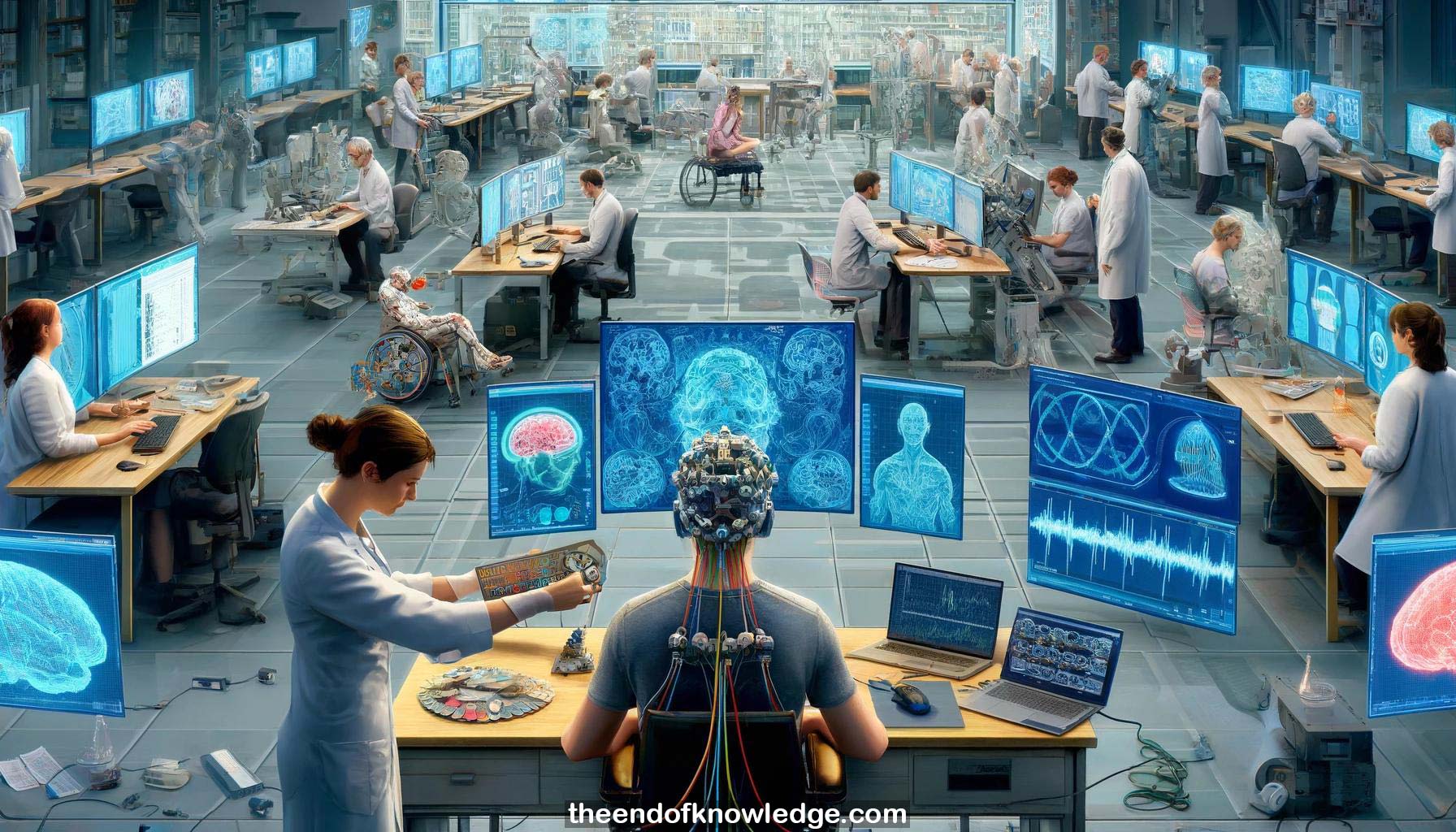 >
>
Concept Graph & Resume using Claude 3 Opus | Chat GPT4 | Llama 3:
Resume:
1.- Reinhold Scherer's motivation for BCI research stems from his father having a neurological condition and wanting to help people with disabilities.
2.- BCIs can be used as a pattern recognition system to generate control signals that allow physically impaired users to move or communicate.
3.- Scherer focuses on endogenous BCIs where users generate brain patterns themselves, requiring the BCI to adapt to the user's changing brain signals.
4.- BCIs can also be used to detect psychological states like workload and drowsiness in a neuro-adaptive interface.
5.- EEG signals have inherent variability between individuals, requiring BCIs to be adapted to each user's unique brain patterns.
6.- Standard BCI training has an offline data collection phase followed by online feedback training, which is time-consuming and has mixed success rates.
7.- A study found only 50% of healthy naive BCI users achieved over 70% accuracy, showing limitations of existing training approaches.
8.- Scherer developed an online co-adaptive training approach providing real-time feedback and adapting BCI parameters, improving performance in a limited training time.
9.- This co-adaptive training achieved 70-90% accuracy for most healthy users within 20-30 minutes without needing expert knowledge to set up.
10.- More advanced signal processing methods like CSP and random forests further improved online co-adaptive training accuracy to around 80% on average.
11.- Transfer learning, using data from previous subjects to initialize a model that adapts to a new user, achieved around 90% accuracy.
12.- Healthy users can learn to control a BCI concurrently with overt manual control, enabling BCI use while still moving normally.
13.- Adapting the mental imagery used (e.g. word generation vs motor imagery) can significantly improve BCI classification accuracy for individual users.
14.- Experiments with different mental tasks found certain task combinations (e.g. word generation vs hand movement) were highly distinguishable for BCI control.
15.- Tailoring the mental tasks to each user, combined with co-adaptive training, improved BCI performance in patients with disabilities.
16.- Providing motivating feedback and individually optimized tasks enabled most patients to achieve good BCI accuracy without expert intervention.
17.- Stopping the continuous BCI adaptation after initial training did not significantly decrease performance, enabling stable longer-term use after auto-calibration.
18.- Complex games like World of Warcraft could be interfaced with a multi-class BCI detecting different imagined movements to control the avatar.
19.- BCIs for users with severe disabilities like cerebral palsy need to account for challenges like uncontrolled muscle activity contaminating EEG signals.
20.- Working closely with end users is crucial to design BCIs that fit their needs, abilities, and preferences for useful real-world applications.
21.- A BCI was successfully used by individuals with cerebral palsy to play games using an auto-calibrated scanning interface they were familiar with.
22.- BCIs can potentially detect VR-induced cybersickness and some types of VR environment errors based on EEG responses without active user tasks.
23.- Tracking losses in VR could be detected from EEG with over 80% accuracy, while background anomalies did not produce a significant response.
24.- BCIs might help improve learning, e.g. by adapting to mental states like workload, attention and anxiety during a lesson.
25.- EEG workload and occipital gamma power were found to increase along with math anxiety during a Sudoku-like math puzzle task.
26.- The EEG workload level increased as the math puzzles became harder, and was higher overall in individuals with high math anxiety.
27.- Developing practical neuro-adaptive learning systems requires analyzing patterns across multiple informative mental states, not just a single measure like workload.
28.- In summary, key advances include rapid auto-calibration, user-specific mental tasks, motivating feedback, and end-user focused design to make BCIs practical.
29.- Robust real-world BCI applications require further research into combining multiple brain and behavioral signals to accurately interpret user states and intents.
30.- Scherer emphasized the importance of collaboration between researchers, clinicians, and end users to drive the field forward and realize the full potential of BCIs.
Knowledge Vault built byDavid Vivancos 2024